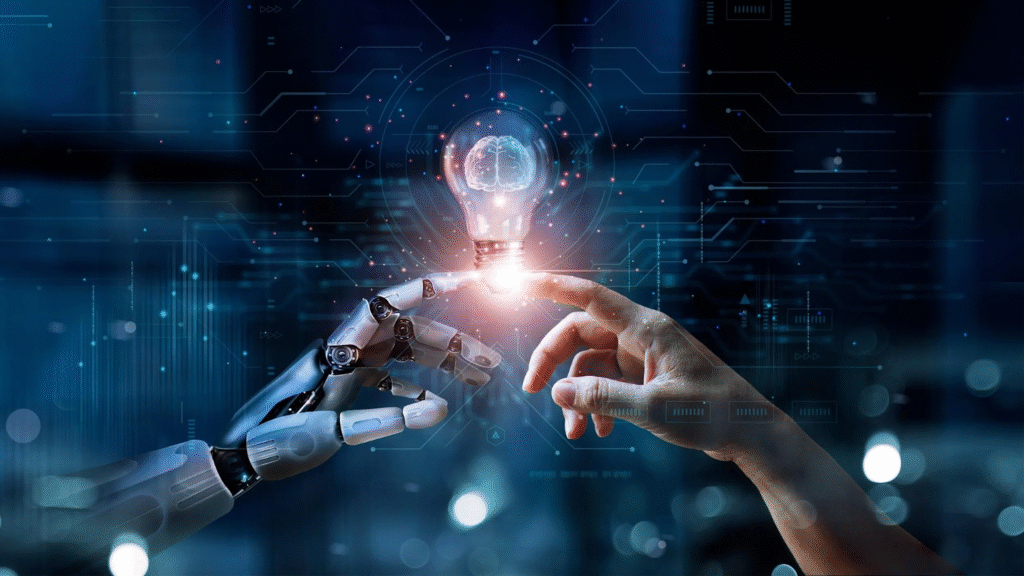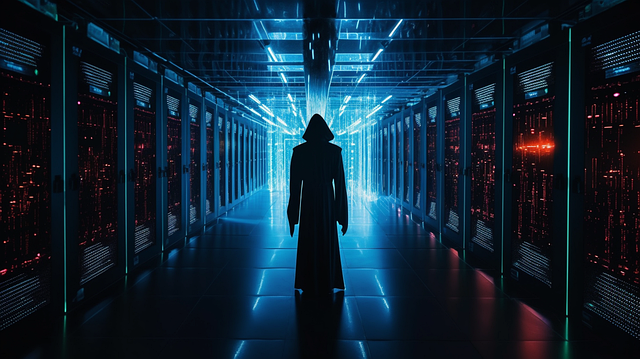
As artificial intelligence continues to advance rapidly, one key debate has taken shape: Can AI actually think and create just like humans do? AI now generates music, writes books, designs art, and even writes poetry. But does that really mean the machines are creative, or are they just reproducing information fed into their system? In this blog, we will discuss what separates human creativity from AI, its pros and cons, and whether machines can think like us and innovate.
Discover the differences between AI vs human creativity, comparing innovation, originality, emotional depth, and how both contribute to the future of creative industries.
The Essence of Human Creativity
Creativity is widely regarded as one of humanity’s most unique traits. This specialization is based on emotion, intuition, experience, and abstract thinking. Humans create new, unique, and meaningful social systems, drawing from their memories, culture, and imagination, not machine learning and biased big data.
What defines AI vs Human Creativity?
Emotions: AI vs Human Creativity is not just about facts; it is deeply related to emotions, personal experiences, and subjective interpretations.
Abstract Thinking: Humans think in abstract ways that are not always logical, and abstract concepts like metaphors, irony, and philosophical questions.
Innovation and Originality: Real creativity is to invent new ideas that go against the common system.
Historical Influences: Many arts and literature are affected by social trends and historical events.
Trial and Error: Our means of human ideation involve lots of failure and inspiration from unlikely places.
The Rise of AI Creativity
AI has made great strides in creative domains. Advanced algorithms, such as GPT-4, DALL-E, and DeepMind’s AlphaCode, can generate human-like text, images, music, and even movie scripts. They rely on machine learning, neural networks, and vast amounts of data to imitate human creativity.
How AI Mimics Creativity
- Pattern Recognition: AI scours massive datasets to identify patterns and even predict what happens next.
- Generative Models: You can create new content by mixing and matching existing ideas, such as paintings in the style of Van Gogh.
- Neural Networks: These are modeled like the human brain to some extent, allowing the AI to learn and improve over time.
- Speed and Efficiency: AI can generate thousands of creative outputs in seconds, something humans cannot do.
AI in Creative Fields
- Writing: AI produces books, poetry, and articles.
- Art & Design: AI generates paintings and logos and makes graphic designs.
- Music Composition: Symphonies and pop songs can be composed by AI.
- Film & Animation: AI scripts, deepfake actors, and CGI advances.
AI vs. Human Creativity
Although AI can replicate creativity, it lacks the fundamental qualities associated with creativity: emotions, consciousness, and personal experiences.
- Emotion & Experience: Human creativity is personal, and experience and emotions are a product of life events and intuition. On the contrary, AI has no feelings and only uses earlier-generated data.
- Uniqueness: Humans can go beyond repetitions and formulate fresh concepts, while AI produces data based on pre-existing structures and trends.
- Cultural Influence: Human art and creativity are influenced by culture, history, and personal identity. AI can only mimic these effects and does not truly understand.
- Flexibility: Humans can evolve their creativity through experience in the real world. AI is constrained by its training data and instructions.
- Intuition: A human creator combines known data with lived experiences, gut feelings, and instincts; AI searches available data and creates from existing algorithms.
Can AI Truly Think? The Philosophical Perspective
The real essence of AI research and philosophy is whether AI can even “think.” Thinking, as defined in human terms, is self-awareness, emotions, and consciousness, none of which AI possesses.
The Turing Test
Originally formulated in 1950 by Alan Turing, the Turing Test tests whether a machine can behave in a way that is essentially identical to a human person. AI has squeaked past simplified versions of this test, but that doesn’t mean it actually comprehends or is self-aware.
The Chinese Room Argument
Articulated by philosopher John Searle, this thought experiment asserts that an AI can appear to understand information but does not “understand” in the whole way that humans do—it only follows instructions.
AI and Consciousness
Despite the amazing progress of AI, there is absolutely no evidence that machines have anything like consciousness, emotions, or self-awareness. AI processes information but doesn’t “experience” life in the way humans do.
The Future: AI is a Tool, Not a Replacement
We should not see AI as a replacement for human creativity but as a tool that can augment human creative potential. For this reason, many industries use a collaboration model between AI and human collaborators to leverage productivity and creativity.
How Humans and AI Collab Together
Artists using AI Tools: Digital Artists create outstanding visuals with AI tools while putting in emotion and interpretation.
Writers & AI: These are AI-assisted writing tools that help authors create and edit content faster.
Music & AI: The combinations of AI-generated beats with human emotion produce some of the best compositions.
Filmmaking & AI: AI-generated CGI and animation create new storytelling opportunities.
Conclusion
Although AI has made incredible strides in replicating human creativity, it remains devoid of consciousness, emotion, and original thought. A machine can create content; it does not think, feel, or create in the way that humans do. AI-human collaboration is the future, with AI acting as an amplification tool rather than a replacement for human creativity.
FAQs
1. Can AI be creative?
While AI can create, creativity is much more than that; it encompasses feelings, abstract thinking, and personal experience, all of which AI does not possess.
2. Is AI going to take the place of the artist and the writer?
AI will support creative professionals instead of replacing them. Machines cannot replicate human originality, storytelling , and emotional depth.
3. Can AI ever develop emotions?
Today, all AI cannot feel. It can analyze patterns of emotional texts but does not actually “feel” emotions like humans do.
4. Should we be afraid of a world where AI rules the arts?
Creatives should not fear AI but rather see it as a tool to improve efficiency and broaden their creative options.


